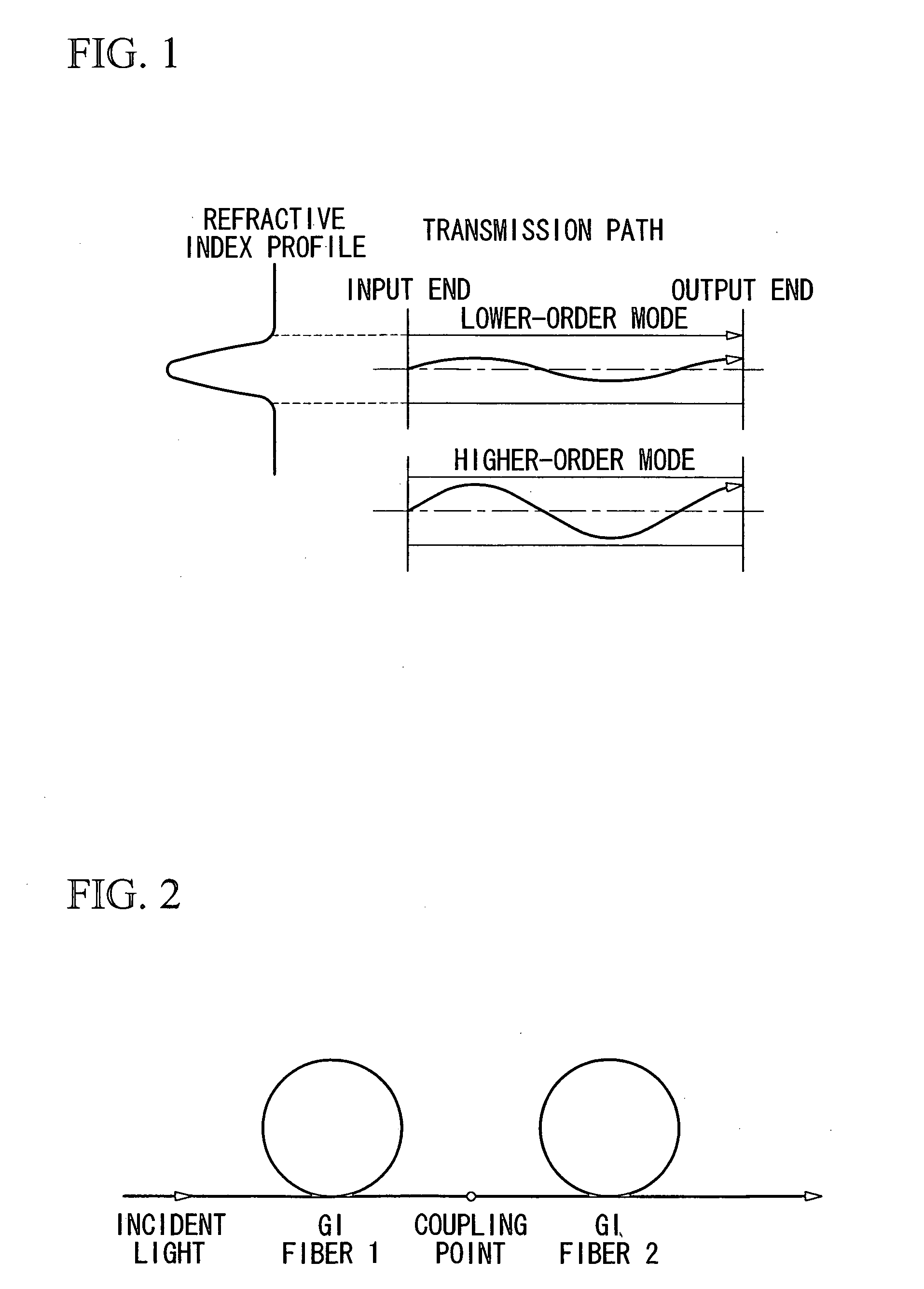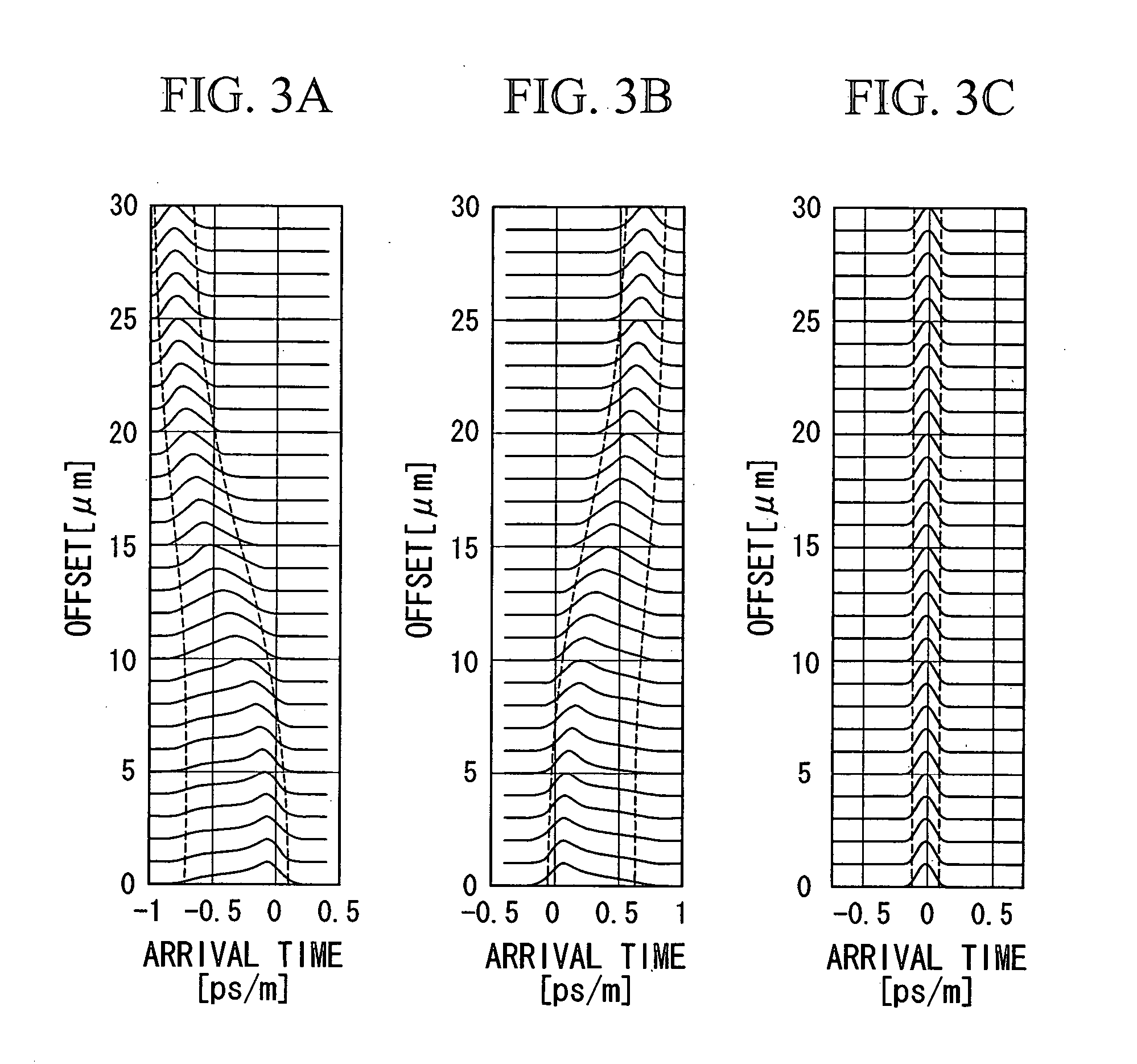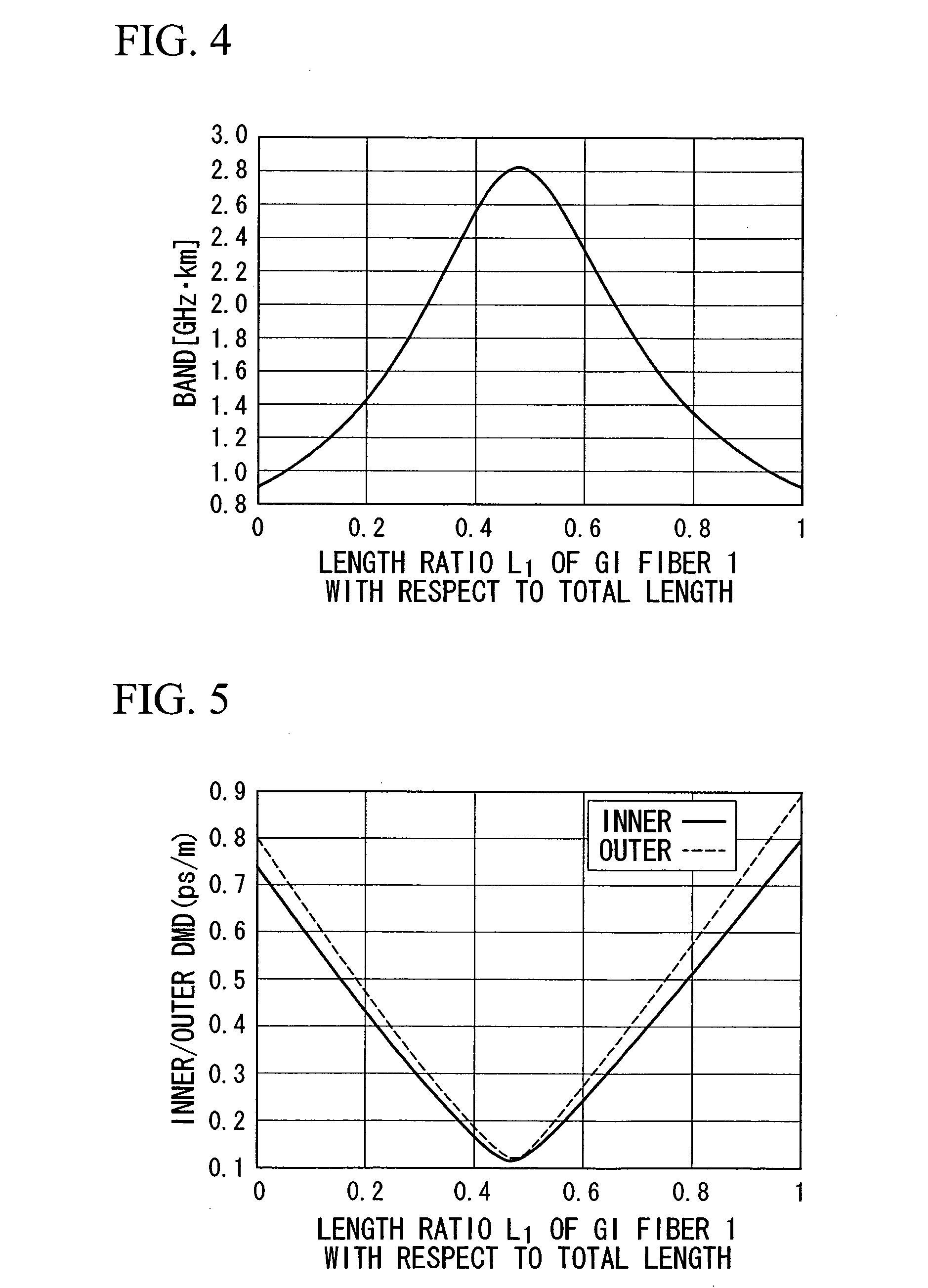Method for compensating modal dispersion in multimode optical fiber transmission path
a multi-mode optical fiber and transmission path technology, applied in the field of compensating modal dispersion in optical fiber transmission path, can solve the problems of increasing manufacturing cost, difficult to achieve stable and constant refractive index dispersion, difficult to manufacture with good yield, etc., to achieve high transmission speed, easy formation over a long distance, the effect of easy formation
- Summary
- Abstract
- Description
- Claims
- Application Information
AI Technical Summary
Benefits of technology
Problems solved by technology
Method used
Image
Examples
specific example 2-1
[0206]FIG. 31 is a diagram of refractive index profiles of a compensated fiber and a mode dispersion-compensating fiber, and a refractive index profile that obtains the maximum band of wavelengths of the signal light used, according to Specific Example 2-1.
[0207] The refractive index ntarget(r) of the compensated fiber at a distance r from its core center is formed so as to approximate to Equation (9) below.
[0208] In Equation (9), n(r) is the refractive index at a distance r from the core center of the optical fiber, n1 is a refractive index at the core center, Δ1 is a relative refractive index difference of the core center with respect to a cladding, a is a core radius, and α is a refractive index profile exponential parameter. n(r)={n1{1-2Δ1 (r / a)α}1 / 2(0≦r≦a)n1{1-2 Δ1}1 / 2(ar)(9)
[0209] The refractive index profile exponential parameter αtarget, obtained when ntarget(r) is approximated by Equation (9), is 1.90. The relative refractive index difference of the core center w...
specific example 2-2
[0236] An optical transmission path is constructed in the same way as Specific Example 2-1, using a mode dispersion-compensating fiber and a compensated fiber having the refractive index profile exponential parameters shown in Table 2. When the wavelength of the signal light is 0.85 μm, the optimum value α0 for refractive index profile is 2.04.
TABLE 2NumericalConstant k ofRefractiveRefractiveLengthWave-index profileindex profile ofLcomp oflengthexponentialModeModeof Signalparameter α ofdispersion-dispersion-SpecificLightCompensatedcompensatingcompensatingExample(μm)FiberFiberFiber (km)2-20.851.9020.1622-30.852.00100.112-40.852.03200.052-50.852.05200.052-60.852.10100.092-70.852.2020.472-80.85—100.112-91.31.8450.22
[0237]FIG. 35 is a diagram of bands in the OFL of an optical transmission path that uses the compensated fiber of Specific Example 2-2, calculated by simulation and plotted against mode dispersion-compensating fiber length Lcomp.
[0238] Specific Example 2-2 differs from Sp...
specific example 2-3
[0242]FIG. 37 is a diagram of bands in the OFL of an optical transmission path that uses the compensated fiber of Specific Example 2-3, calculated by simulation and plotted against mode dispersion-compensating fiber length Lcomp. This differs from Specific Example 2-1 in that the refractive index profile exponential parameter αtarget of the compensated fiber is 2.00.
[0243] Although the maximum band value tends to decrease as the numerical constant k in Equation (3) expressing Δcomp(r) increases, it does not noticeably decrease when the numerical constant k is 10 or less, and remains approximately constant.
[0244] Accordingly, to compensate modal dispersion in the compensated fiber of Specific Example 2-3, the optical transmission path is constructed by coupling a mode dispersion-compensating fiber, whose Δcomp(r) has a numerical constant k of 10 in Equation (3) and whose length Lcomp when the band reaches its maximum is 0.11 km, to the compensated fiber.
[0245]FIG. 38 is a diagram ...
PUM
 Login to View More
Login to View More Abstract
Description
Claims
Application Information
 Login to View More
Login to View More - R&D
- Intellectual Property
- Life Sciences
- Materials
- Tech Scout
- Unparalleled Data Quality
- Higher Quality Content
- 60% Fewer Hallucinations
Browse by: Latest US Patents, China's latest patents, Technical Efficacy Thesaurus, Application Domain, Technology Topic, Popular Technical Reports.
© 2025 PatSnap. All rights reserved.Legal|Privacy policy|Modern Slavery Act Transparency Statement|Sitemap|About US| Contact US: help@patsnap.com



